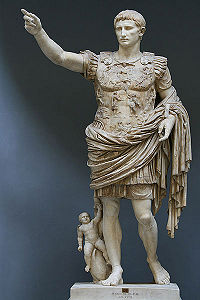Author: dreis@uoregon.edu
Earth First!
Cascadia Forest Defenders: Film Screening
Wrenched the movie
March 5 @ 8:30pm
University of Oregon, Willamette 100
Donations requested
“Filmmaker ML Lincoln’s documentary Wrenched reveals how Edward Abbey’s anarchistic spirit and riotous novels influenced and helped guide the nascent environmental movement of the 1970s and ‘80s. Through interviews, archival footage and re-enactments, ML Lincoln captures the outrage of Abbey’s friends who were the original eco-warriors. In defense of wilderness, these early activists pioneered ”monkeywrenching” – a radical blueprint for “wrenching the system.” Exemplified by EarthFirst! in the early ‘80s, direct action and civil disobedience grew in popularity. With tree-spiking, forest occupation and high-profile publicity stunts such as the cracking at Glen Canyon Dam, this group became the eventual target of FBI infiltrators, leading to the arrest of various members.”
Trailer: https://vimeo.com/64900586
Apocalyptic Art: Early Christianity
Ecotherology
“Raping Rome”
In “Raping Rome,” Stephen Moore explores the meaning(s) and significance behind the feminization of Rome in Revelation. Following previous commentators, he notes that Rome/Babylon “comes already sexed and gendered” through the Jewish tradition (127). Yet Revelation seems to be the only text that elaborates upon this idea with sexualized rhetoric that depicts the empire as a prostitute drunk on her lustful passions (porneia). This arresting image is best understood, according to Moore, as a “counter-imperial representation of Rome,” a parody of the empire’s depiction of itself through its august warrior goddess, Roma (128).
Moore begins with an examination of the cult of Roma in Asia Minor. Long known as the symbol of Rome, the goddess was naturally linked with power: not only did her name itself convey authority (rhome = strength), but iconic representations routinely highlight her martial attributes (e.g., carrying military equipment and wearing armor, defeating enemies, and holding the goddess Victory). The works of poets praising Rome complement this ideological portrait: Melinno of Lesbos, for example, celebrates “the royal glory of everlasting rule” of the goddess and her “lordly might” (134-135). Depictions of Roma in art reinforce this image; as a conquering hero she dominates her vanquished opponents, themselves personified as stereotypical women. Roma thus “emblematizes mythic masculinity” (135).
Moore find this evidence striking because it appears to destabilize ancient gender norms, which identified power and control as visible markers of a person’s gendered identity (“men” exercised these traits while “women” did not). In this system, though, such qualities were never fixed or stable, and masculinity was always something that biological men had to demonstrate. At the same time, biological women might occasionally transcend the weakness of their sex and achieve masculine honor (136, 140-142). Roma, then, appears as “a visual allegory of hegemonic Roman gender ideology”: a goddess whose femininity is constantly moving toward manliness by performing acts of masculine virtus, domination and control (143).
How might we compare this imperial understanding of Roma as “hegemonic Roman manhood encased in female flesh that is clad in hypermasculine garb” with Revelation’s gendered depiction of the empire? Moore sees John inverting the imperial image: the empire’s masculine woman is, in John’s hands, reclothed as a slavish prostitute whose masculine performance fails to convince, and whose seductive qualities threaten Christian identity. The imagery then turns violent, as John predicts that the whore will be stripped, sexually shamed, and ruthlessly destroyed. This “pornoprophecy” heightens the theme of domination and control and reveals that John too has been seduced by Roman gender ideology (146-148). John does not restrict his divinely sanctioned sexualized violence to his external opponents, however; he also targets internal enemies—Jezebel, in particular—with the same tactic (148). John’s wrath against women only ceases when they embody the marks of feminine purity (the mother, the virgin bride).
John’s feminization of Rome shows that he subscribes to the assumptions of sex and gender found in the empire, that men and women could slide back and forth between masculinity and femininity. Like other Roman males, he privileged masculinity over femininity, thus reaffirming the gender binary. Yet Moore also shows that Revelation upsets this stratification through its depiction of Christ as a human-like androgyne, a masculine figure who possesses female anatomy (Moore, 149-150; see Rev 1:13; 19:11-21). If gender is the mark of personhood, then Christ stands outside of the human sphere, a celestial androgyne who moves between male and female and divine and beast (152).
Imperial-Colonial Intersections
Rome: A History of the Eternal City
Roman Imperium
Introduction to Apocalypticism


